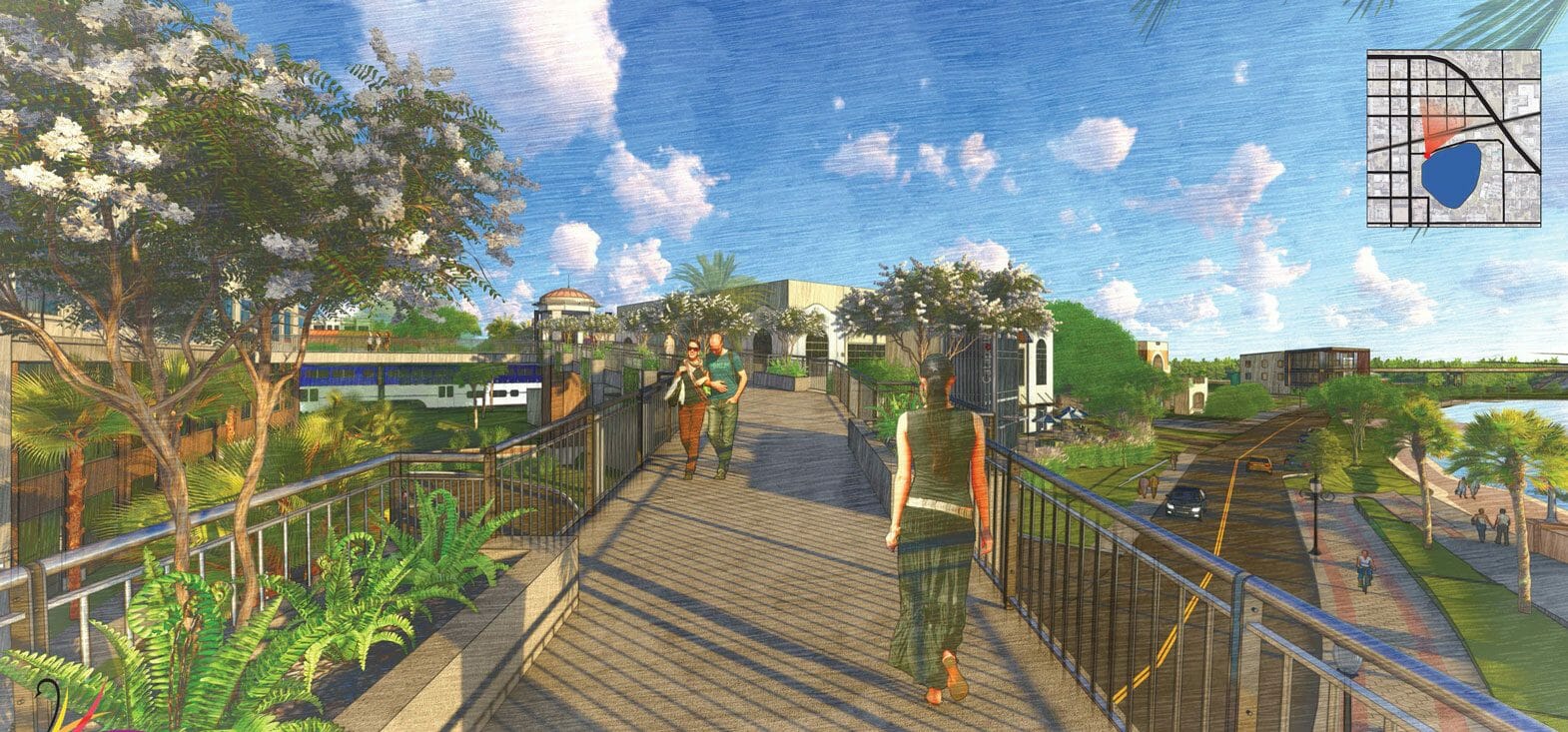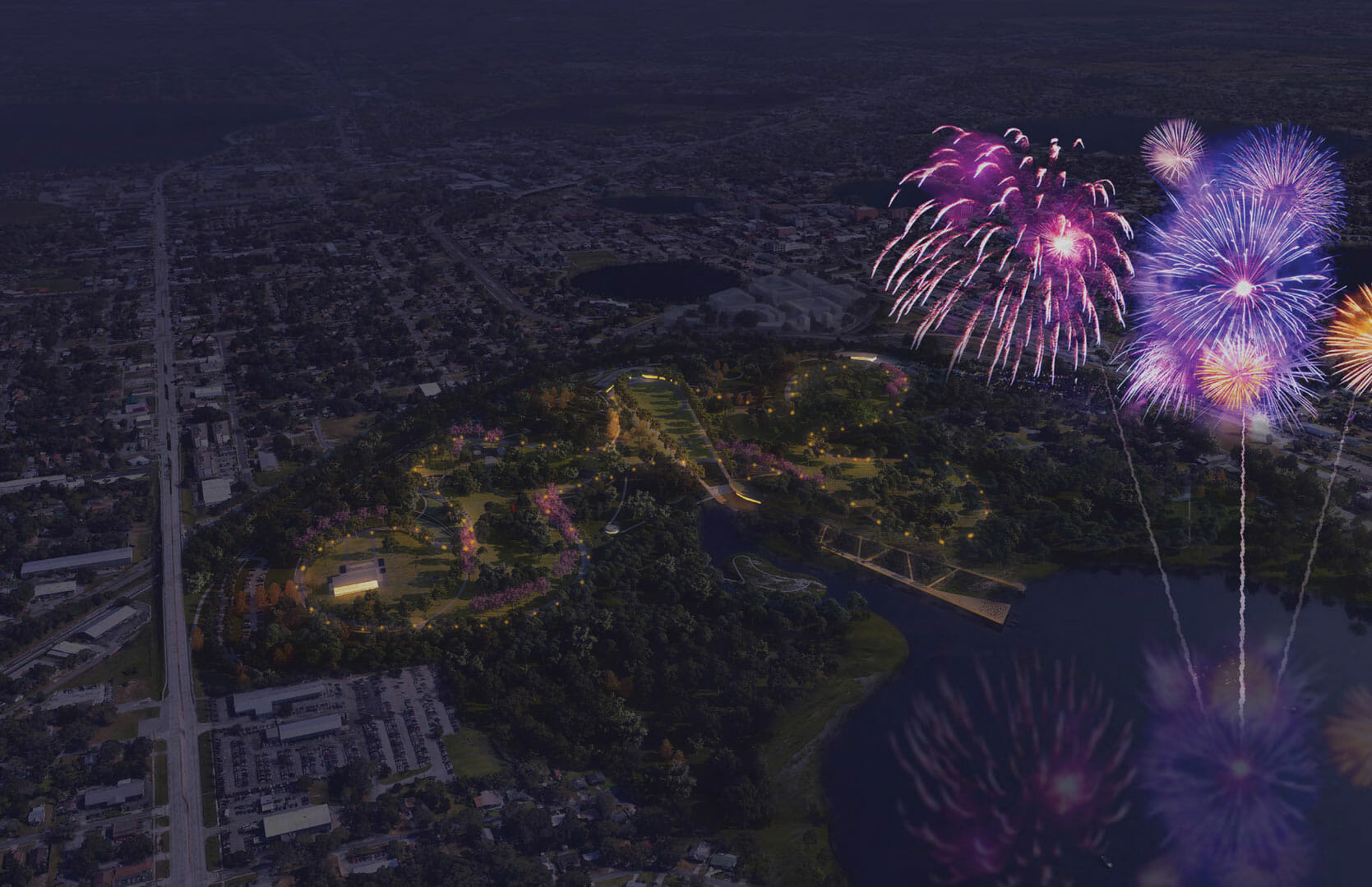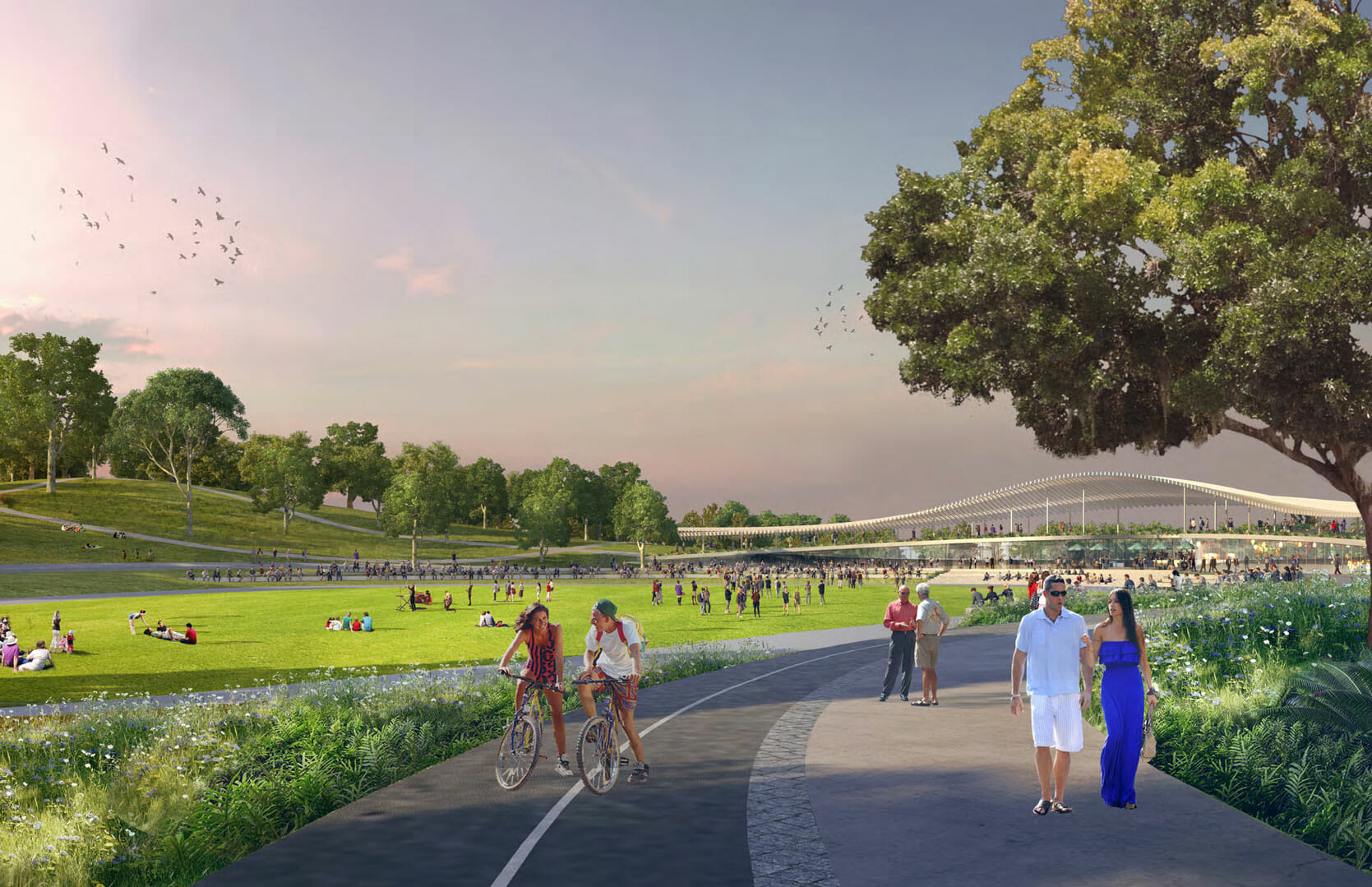As our city grows, our connection to the outdoors is more important than ever.
Public outdoor spaces play an important role in a city’s design. But they are far more than charming parks, green roofs, and pretty plants — although all those contribute to them, too. It’s a thoughtful consideration of a city’s infrastructure and environment in order to better shape its look, functionality, and overall culture.
As our city continues to grow, property development that includes the use of public outdoor spaces should also be taken into consideration. There are multiple benefits of urban planning and designing outdoor spaces that merge with the landscapes they exist within and around them. These spaces give us a place to breathe, pause, share ideas, gather, and become a connected city.
ENVISIONING A BETTER DOWNTOWN
In January 2019, the City of Lakeland released a plan that outlines what Lakeland could look like in the next 10 years. The concept, titled “Envisioning a Better Downtown,” includes geographic data and architect renderings that imagine the redevelopment and expansion of what already makes up the downtown area.
There are a number of highlights detailed out in this plan, including bringing in new businesses, an urban corporate park, expanded entertainment areas, and resolved parking plans. Many of the plans would work toward increasing density in the downtown area of the city.
“A downtown is successful at the street level, not because cars are accommodated but because pedestrians are comfortable getting to where they want to go. Social interaction on the street occurs as pedestrians greet one another and share an open space.”
“A vibrant downtown has to have a mix of uses that will attract residents and employees to the area,” says Pam Page, deputy director of Parks & Recreation for the City of Lakeland. In order to bring in this mix, new development must be made to accommodate residences and businesses. However, parking remains an ongoing problem to accommodate this growth. “Envisioning a Better Downtown” looks to solve this problem by building vertical, adding parking upwards in several-story buildings. Additional parking would make downtown more accessible for all.
However, as density increases in the city, it has become increasingly important to create small pocket parks that encourage us to get outside, too. “Green spaces, large or small, provide respite from the hubbub of city life,” says Page. The added vitality of our city comes from increased expenditure from thriving businesses, but it also comes from the connectivity made as people gather in public spaces as well. “It is easy as we develop to maximize the return of investment. However, thought should be given to designate public outdoor space threaded throughout the downtown,” says Page.
Smaller urban spaces, like pocket parks, are easy solutions for utilizing vacant space amidst city buildings. An example of a pocket park would be the Fallen Heroes Garden located at the front of the Lakeland Police Department. “These parks can be tucked amongst the building and should be designated as such with proposed new development,” says Page. As Lakeland looks to the future, ideas for how to add these pocket parks in the midst of rising development is also in the discussion.
“These areas need to attract multigenerational users and our pets,” adds Page.

A notable outdoor space being added to downtown is Central Bark, an urban dog park planned for construction later this year. The park will be located across from the fire station north of Lake Mirror. “We will have public art in the dog park, water fountains for dogs, benches for people, and shade trees. The scale of the park is small in comparison to other Lakeland dog parks. However, it will be in keeping with urban dog parks in other cities where land is extremely valuable,” says Page.
Although Page does not dismiss the great benefits that will come from addressing the parking concerns in the downtown area, she also believes that we have to balance out such development with places where our community can get outside and socialize.
“A downtown is successful at the street level, not because cars are accommodated but because pedestrians are comfortable getting to where they want to go,” says Page. “Social interaction on the street occurs as pedestrians greet one another and share an open space. Connectivity of a walkable community is key to the success of linking open space areas.”
A PLACE TO PLAY
West of downtown Lakeland is another development that will add to the urban landscape of our community. Bonnet Springs Park, a 180-acre privately developed public park, has plans to open in 2020. The land for the park is nestled near the shores of Lake Bonnet and spans across a now-vacant area on Kathleen Road between Memorial Boulevard and George Jenkins Boulevard. This park will make use of a once underutilized piece of land to create a valuable public space for the Lakeland community.
Sasaki Associates, developers from a Boston-based planning firm with extensive experience with urban parks, have helped design the privately funded park and transform the environmentally damaged area into a thriving urban landscape.

Bonnet Springs Park is a privately developed public park that depends solely on public support. If you’re interested in donating or learning more about the park, visit bonnetspringspark.com.
“Connectivity of a walkable community is key to the success of linking open space areas.”
Bonnet Springs Park has a goal to be an asset for our community. Along with amenities like a canopy walk, nature center, event lawn, walking and biking trails, water activities, and a sculpture garden, the park will offer practical solutions for conservation, health and wellness, and social equity. It will be a park that offers additional space to play outdoors and connect us to the people of our community in active and engaging ways.
There are many exciting amenities to look forward to from this park. One area in particular is the park’s approach to play. The team behind the park has created a comprehensive approach to the park’s play scene by utilizing four types of play — functional, constructive, dramatic, and games play. According the Bonnet Springs Park January 2019 newsletter, “The park’s playgrounds will have the ability to reinforce shared experiences and forge new connections amongst its visitors.”
Nature playgrounds will expose visitors to natural elements and encourage them to explore the world around them. There will be various play elements scattered throughout the park. The areas will have play elements that use fast motion, height, exploration, exposure to natural elements, and use of functional tools all with the purpose of building creativity, imagination, and environmental stewardship.
ART MATTERS, TOO

In 2001, the city began to invest in outdoor public art with the city commission agreeing to fund the Outdoor Sculpture Exhibition on Lemon Street. Since then, the City of Lakeland has issued an international call to artists every fall. After submissions have been juried, 10 sculptures are chosen every year to line Lemon Street. “The competition has been a huge success and is very popular with sculptors,” says Page.
The City allows local artists to display original artwork in the business district, from large-scale murals to removable pieces from
Tapestries Lakeland.
Similar to most art, public art provides a pathway for engagement, which in turn has the ability to create community attachment. Along with providing a way for pedestrians to slow down and enjoy the outdoor space it occupies, public art enhances meaning in our civic places and adds culture to our community. Over the past 18 years, the city has continued to see the cultural, social, and economic value of public art.
“The City has recently begun to allow local artists to display work in the business districts, and the CRA is investing in venues for local artists to produce and show work,” says Cynthia Haffey, executive director of Platform Art, Inc.
“It is important to us to raise the awareness of the public concerning art and to provide a venue for our citizens and visitors to reap the benefits of seeing great art free of charge.”
Today, people are able to step outside and enjoy various forms of art on streets and alleyways throughout these business districts. Large-scale murals and tapestry artwork cover the walls of our city and have sparked significant dialogue. “It is important to us to raise awareness to the public concerning art and to provide a venue for our citizens and visitors to reap the benefits of seeing great art free of charge,” says Page.
 A SENSE OF PLACE
A SENSE OF PLACE
In ways both large and small, the city invests in infrastructure and development that is committed to the connectivity of our community. As new buildings continue to go up and add to the growth of our city, Lakeland is also paying attention to the spaces that lie between these permanent fixtures. Our landscape is far more than new buildings and residencies, and the city sees that. Lakeland gives us many opportunities to breathe in the fresh air, dip our feet in the water, and appreciate the natural beauty that surrounds us, because it is through this type of connection that we develop a sense of place.

 A SENSE OF PLACE
A SENSE OF PLACE